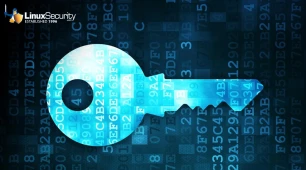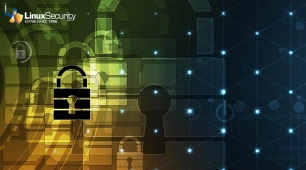
In this digital age, Linux servers face unprecedented challenges posed by cyber threats. These, in turn, introduce new vulnerabilities that system administrators must address. Traditionally considered a more secure environment compared to other operating systems such as Windows or macOS, Linux is presently under attack from malware strains of different types and sophisticated attack vectors.
In this article, I’ll provide a comprehensive overview of the existing Linux security landscape, the vectors that expose Linux servers to attacks, and the significance of Arch Linux security updates, delivering actionable insights to help you enhance your server security strategy.
Understanding the Evolving Linux Threat Landscape
Traditionally, Linux users have enjoyed relative security, as many believed malware and computer viruses targeted mainly proprietary operating systems. However, as cybercriminals have become more intelligent, Linux servers have been considered one of the most profitable targets.
IBM reports that malware targeting Linux has increased. Linux malware strains such as Cloud Snooper, EvilGnome, HiddenWasp, QNAPCrypt, GonnaCry, FBOT, and Tycoon have been revealed. This type of malware employs new techniques to hide its presence and infect servers, thus being highly disruptive.
The CISA indicates that Linux servers have become easy targets for attacks. It showed that about 70% of web servers run on Linux and are, therefore, open to attacks by hackers. In addition, Forbes reported that about 45% of all Linux vulnerabilities were exploited in the wild. According to a study by the Ponemon Institute, the average data breach cost reached an astonishing $4.45 million in 2023, again underscoring the financial consequences of security complacency. These numbers directly correlate with an uptick in targeted attacks against Linux systems and reinforce the importance of solid security investments within organizations.
How Secure Is Linux?
 Linux offers even greater security benefits in the face of increasing threats than proprietary operating systems. Because of its open-source code, thousands of programmers and safety experts continuously check and watch it. The results of such combined vigilance include quickly locating and patching weak points versus the often sluggish and non-transparent ways of patching closed-source software.
Linux offers even greater security benefits in the face of increasing threats than proprietary operating systems. Because of its open-source code, thousands of programmers and safety experts continuously check and watch it. The results of such combined vigilance include quickly locating and patching weak points versus the often sluggish and non-transparent ways of patching closed-source software.
One of Linux's strong selling points is its strict privilege model for the user, which severely restricts root and thus minimizes unauthorized access and privilege escalation. The operating system has a set of default defenses, including packet filtering kernel firewalls, firmware verification via UEFI Secure Boot configuration using the Linux Kernel Lockdown, and Mandatory Access Control systems such as SELinux and AppArmor. This helps increase security by controlling how programs interact with each other and the rest of the system.
While these features provide a strong defense, the Linux system is still vulnerable to misconfigurations and poor service management. For example, services configured incorrectly or with default settings introduce vulnerabilities that cybercriminals can easily leverage. This demands that all users adopt positive habits that establish security properly in their environments since inherent features alone cannot guarantee good security.
Best Methods Securing Linux Servers Against Modern Threats
Administrators should ensure that various best practices are followed to maximize the security of Linux systems in the present environment. First and foremost, systems should be updated regularly.
The FBI highly encourages patching any known vulnerabilities as quickly as possible against foreign threat actors targeting them. Attackers tend to attack systems with known vulnerabilities rather than trying zero-day exploits, which are much harder to breach. Therefore, this may enable administrators to remain up-to-date with the latest security advisories for their distribution using platforms like LinuxSecurity.com, giving timely updates.
Another good strategy for increased control over resource access on a Linux system is implementing SELinux. SELinux is an extremely powerful, highly granular mandatory access control system that confines access by default based on a defined policy extending well beyond traditional discretionary access control systems. For example, a Web browser has no reason to access an SSH key. SELinux would deny such access in that case, reducing the attack surface area.
Network hardening ensures an imposing defense system against the Linux servers. Firewalls must be configured to allow or block incoming and outgoing traffic based on predefined security rules by implementing command-line utilities like iptables and Firewalld.
Network intrusion detection systems can be set up to identify suspicious activities running within network traffic where potential intrusions could occur. Snort and Suricata provide real-time traffic analysis, alerting the administrator of impending dangers. Virtual Private Networks (VPNs) are highly advantageous for safely accessing other servers. T hey keep sensitive data encrypted and private.
hey keep sensitive data encrypted and private.
Access controls make it easy to disallow unauthorized access. The principle of least privilege (PoLP) simply requires that a user be granted no more permissions than necessary to perform their job functions. Similarly, user accounts and permissions are reviewed periodically to ensure conformance to security policies, minimizing the danger of insider threats. Multi-factor authentication (MFA) further improves login security by allowing a user who wants to access resources to prove his identity using two or more verification factors.
System logs should be monitored regarding events indicating a potential security breach. The administrator must enable log management solutions to make log data collection and analysis easier. Log data could be visualized and analyzed effectively using tools such as the ELK Stack, which comprises Elasticsearch, Logstash, and Kibana. Besides, regular audits of the system configuration settings and users' activities will enable one to find and eliminate security gaps before malicious intrusion may take advantage of them.
Various security tools can be added to harden a Linux server. While Linux is a relatively secure operating system from traditional malware, antivirus solutions like ClamAV help find known attacks and prevent them from propagating.
With the recent use of containerization with Docker and Kubernetes, it is also paramount to implement container security measures.
Routine scanning for vulnerabilities with tools like OpenVAS and Nessus will also help to identify security threats before they are exploited.
Examining The Importance of Cyber Hygiene
Cyber hygiene is one of the most critical aspects of securing a Linux server. This implies regular user and staff education regarding the latest phishing tactics and social engineering attacks. Training sessions and phishing exercises could power such awareness. Encourage the use of strong, unique passwords and the periodic changing of the passwords. Yes, it is possible to remember complex passwords through password managers.
Further, all software, including third-party applications, should be updated and patched against known vulnerabilities to limit attack exposure. This can be automated using Ansible or Puppet so that the potential for human error is minimized and security protocols are followed.
Our Final Thoughts on Securing Linux Servers in 2024
Excellent ways to further secure Linux systems are using mechanisms like SELinux, performing strict patch management, monitoring them constantly, controlling access, and educating users.
By understanding and addressing current threats, organizations can safeguard their Linux systems against ever-evolving cyber risks, ensuring the integrity and availability of critical assets.


















